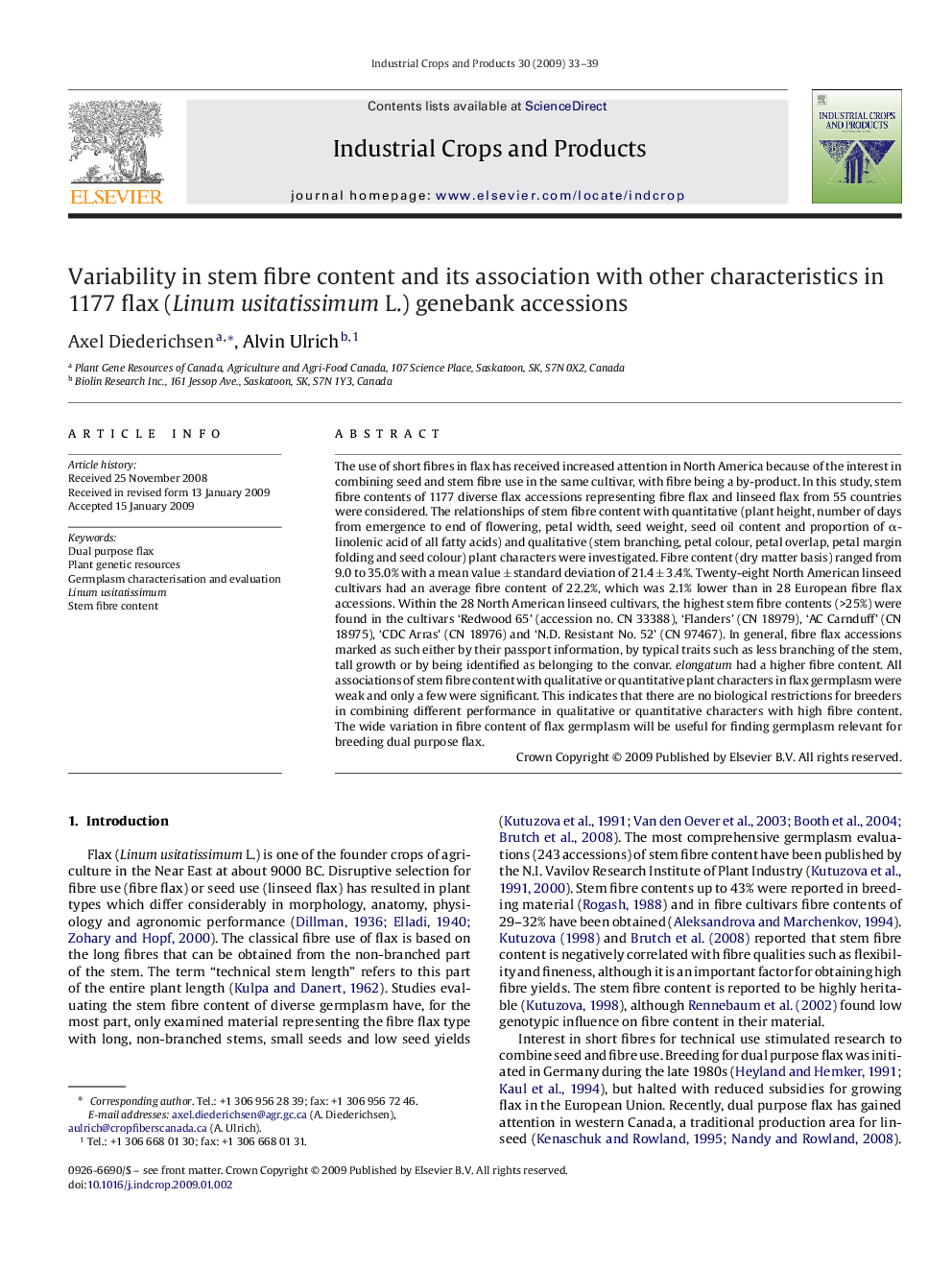| کد مقاله | کد نشریه | سال انتشار | مقاله انگلیسی | نسخه تمام متن |
|---|---|---|---|---|
| 4514925 | 1322224 | 2009 | 7 صفحه PDF | دانلود رایگان |

The use of short fibres in flax has received increased attention in North America because of the interest in combining seed and stem fibre use in the same cultivar, with fibre being a by-product. In this study, stem fibre contents of 1177 diverse flax accessions representing fibre flax and linseed flax from 55 countries were considered. The relationships of stem fibre content with quantitative (plant height, number of days from emergence to end of flowering, petal width, seed weight, seed oil content and proportion of α-linolenic acid of all fatty acids) and qualitative (stem branching, petal colour, petal overlap, petal margin folding and seed colour) plant characters were investigated. Fibre content (dry matter basis) ranged from 9.0 to 35.0% with a mean value ± standard deviation of 21.4 ± 3.4%. Twenty-eight North American linseed cultivars had an average fibre content of 22.2%, which was 2.1% lower than in 28 European fibre flax accessions. Within the 28 North American linseed cultivars, the highest stem fibre contents (>25%) were found in the cultivars ‘Redwood 65’ (accession no. CN 33388), ‘Flanders’ (CN 18979), ‘AC Carnduff’ (CN 18975), ‘CDC Arras’ (CN 18976) and ‘N.D. Resistant No. 52’ (CN 97467). In general, fibre flax accessions marked as such either by their passport information, by typical traits such as less branching of the stem, tall growth or by being identified as belonging to the convar. elongatum had a higher fibre content. All associations of stem fibre content with qualitative or quantitative plant characters in flax germplasm were weak and only a few were significant. This indicates that there are no biological restrictions for breeders in combining different performance in qualitative or quantitative characters with high fibre content. The wide variation in fibre content of flax germplasm will be useful for finding germplasm relevant for breeding dual purpose flax.
Journal: Industrial Crops and Products - Volume 30, Issue 1, July 2009, Pages 33–39